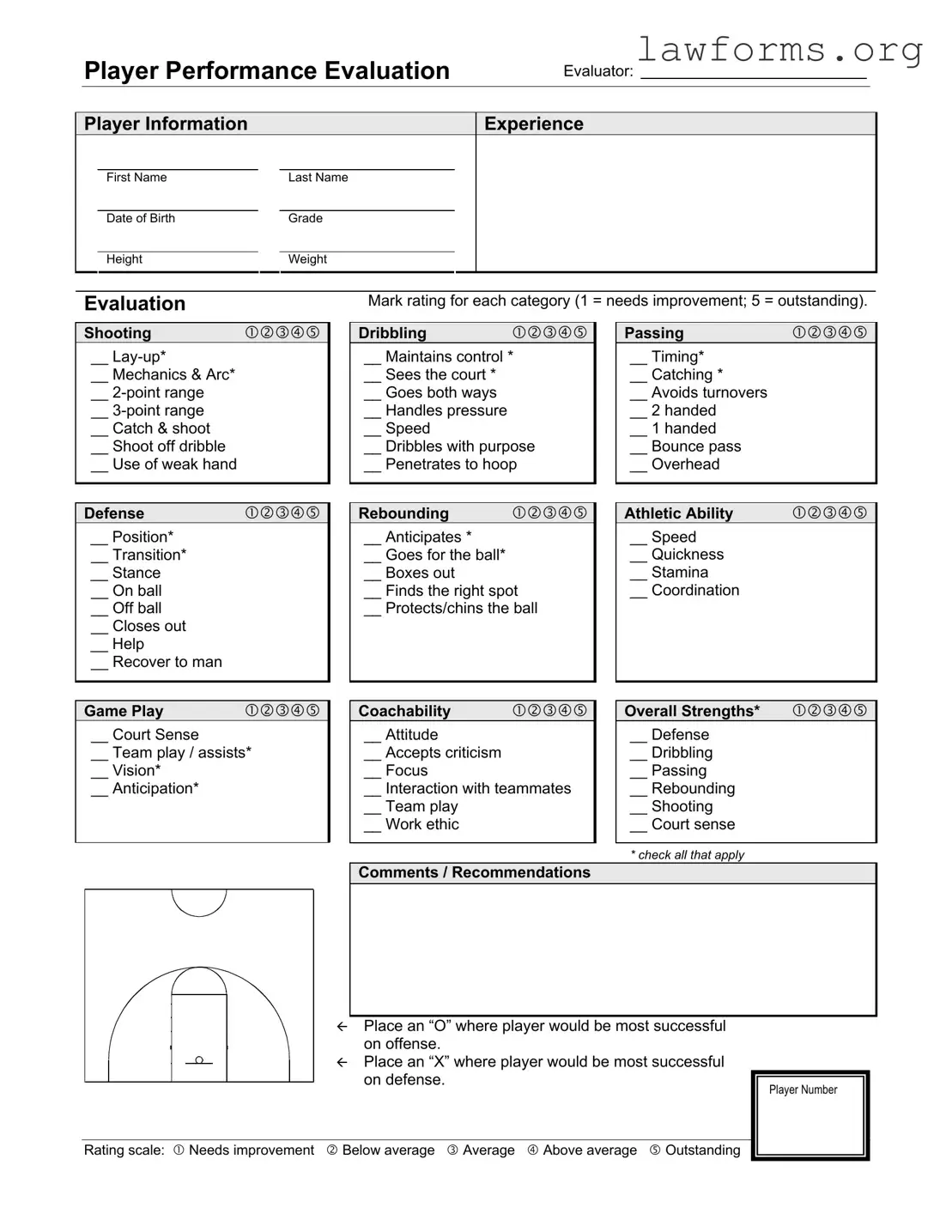Fill Out a Valid Basketball Evaluation Template
The Basketball Evaluation Form is a comprehensive tool designed to assess a player's skills and performance on the court. This form covers various aspects of the game, including shooting, defense, dribbling, and overall athletic ability, allowing evaluators to provide detailed feedback. To contribute to a player's development, fill out the evaluation form by clicking the button below.
Customize Document Online

